
DomAfonso VI, known as "the Victorious", was the second king of Portugal of the House of Braganza from 1656 until his death. He was initially under the regency of his mother, Luisa de Guzmán, until 1662, when he removed her to a convent and took power with the help of his favourite, D. Luís de Vasconcelos e Sousa, 3rd Count of Castelo Melhor.
Theodosius is a given name. It may take the form Teodósio, Teodosie, Teodosije etc. Theodosia is a feminine version of the name.
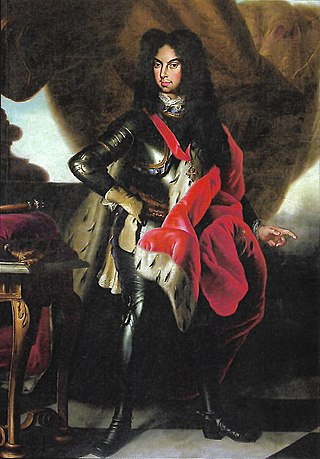
DomPedro II, nicknamed "the Pacific", was King of Portugal from 1683 until his death, previously serving as regent for his brother Afonso VI from 1668 until his own accession. He was the fifth and last child of John IV and Luisa de Guzmán.

The title Duke of Braganza in the House of Braganza is one of the most important titles in the peerage of Portugal. Starting in 1640, when the House of Braganza acceded to the throne of Portugal, the male heir of the Portuguese Crown were known as Duke of Braganza, along with their style Prince of Beira or Prince of Brazil. The tradition of the heir to the throne being titled Duke of Braganza was revived by various pretenders after the establishment of the Portuguese Republic on 5 October 1910 to signify their claims to the throne.

Teodósio II, 7th Duke of Braganza was a Portuguese nobleman and father of João IV of Portugal. He is known for his allegiance to King Philip I of Portugal.

The Most Serene House of Braganza, also known as the Brigantine dynasty, is a dynasty of emperors, kings, princes, and dukes of Portuguese origin which reigned in Europe and the Americas.
Prince of Beira is a title traditionally granted to the heir apparent to the throne of Portugal. The title's original use that it be granted on the eldest daughter of the reigning monarch of Portugal. Tied with the title of Prince of Beira, is Duke of Barcelos, as heir to the Duke of Braganza and Prince of Brazil. The title's name has its origins in the Beira province in central Portugal.

The Duchy of Braganza has been the fief of an important Portuguese noble family: the House of Braganza, and is one of the most important Dukedoms of Portugal. Created in 1442 by King Afonso V of Portugal for his uncle Afonso, Count of Barcelos, it is one of the oldest fiefdoms in Portugal.

Vila Viçosa is a town and a municipality in the District of Évora, Alentejo in Portugal. The population in 2011 was 8,319, in an area of 194.86 km².
The Portuguese succession crisis of 1580 emerged as a result of the deaths of young King Sebastian I of Portugal in the Battle of Alcácer Quibir in 1578 and his successor and great-uncle Henry I in 1580. As Sebastian and Henry lacked immediate heirs, a dynastic crisis unfolded, marked by internal conflicts and external contenders vying for the Portuguese throne. Ultimately, Philip II of Spain succeeded Henry I as King of Portugal, uniting the Portuguese and Spanish Crowns in the Iberian Union. This personal union endured for 60 years, during which the Portuguese Empire faced decline and global challenges, notably the Dutch–Portuguese War.
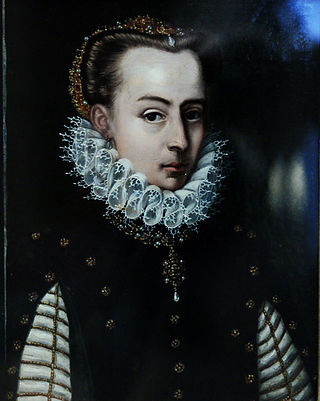
Infanta Catherine of Portugal, Duchess of Braganza by marriage was a Portuguese infanta (princess) claimant to the throne during the Portuguese succession crisis of 1580.
Prince of Brazil was the title held by the heir-apparent to the Kingdom of Portugal, from 1645 to 1815. Tied with the title of Prince of Brazil was the title Duke of Braganza and the various subsidiary titles of the Dukedom of Braganza.
This is a list of Princesses of Brazil, from 1645 to 1815, both by marriage and birth. The title was preceded by the titles Princess of Portugal and succeeded by Princess Royal of Portugal.
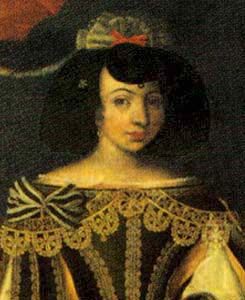
Joana, Princess of Beira was a Portuguese infanta (princess), and the eldest surviving daughter of John IV, King of Portugal and his wife Luisa de Guzmán.

Luisa María Francisca de Guzmán y Sandoval was Queen of Portugal as the spouse of King John IV, the first Braganza ruler. She was the mother of two kings of Portugal and a queen of England. She served as regent of Portugal from 1656 until 1662.

Afonso de Braganza, Prince of Beira, is the eldest son of Duarte Pio, Duke of Braganza and Isabel de Herédia. Being the heir of the House of Braganza, he bears the courtesy title of Prince of Beira.
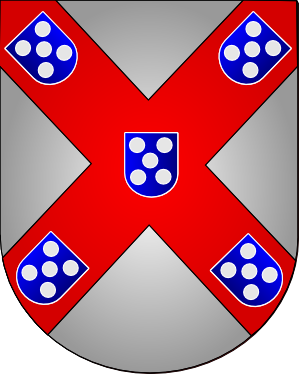
The Dukes of Barcelos was a title of nobility granted by King Sebastian of Portugal on 5 August 1562 to the heir of the Duke of Braganza. After the Braganza accession to the throne, the title continued to be the title of the heir of the Duke of Braganza, alongside the title of Prince of Beira.

The title Marquis of Vila Viçosa was created by royal decree, dated May 25, 1455, by King Afonso V of Portugal), to Fernando of Braganza, second son of Afonso, 1st Duke of Braganza.

Prince of Brazil was an imperial title of the Empire of Brazil bestowed upon the members of the Brazilian imperial family who were not the heir apparent or heir presumptive to the throne, by the 1824 Brazilian Constitution. After the overthrow of the Brazilian monarchy in 1889, the title was officially abolished by the First Brazilian Republic's 1891 constitution. Nevertheless, the title continues to be used as title of pretense by members of the House of Orléans-Braganza, the cadet branch and successor of the deposed Imperial House.
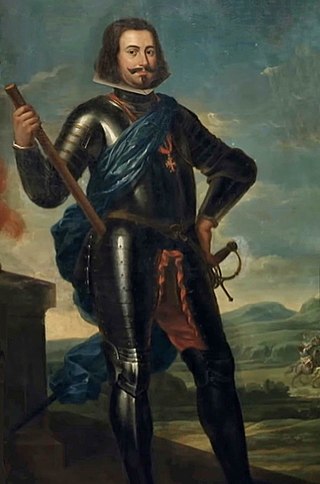
The Curse of the Braganzas is a myth, referred to in several historical chronicles, concerning the House of Braganza, that ruled the Kingdom of Portugal (1640–1910), the United Kingdom of Portugal, Brazil and the Algarves (1815–1822) and the Empire of Brazil (1822–1889) and, therefore, all the Portuguese Overseas Empire.















